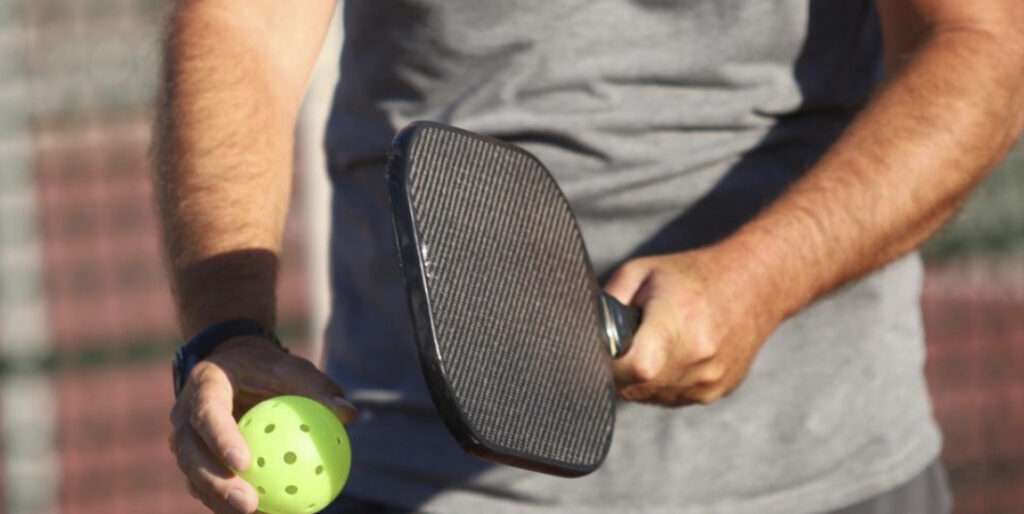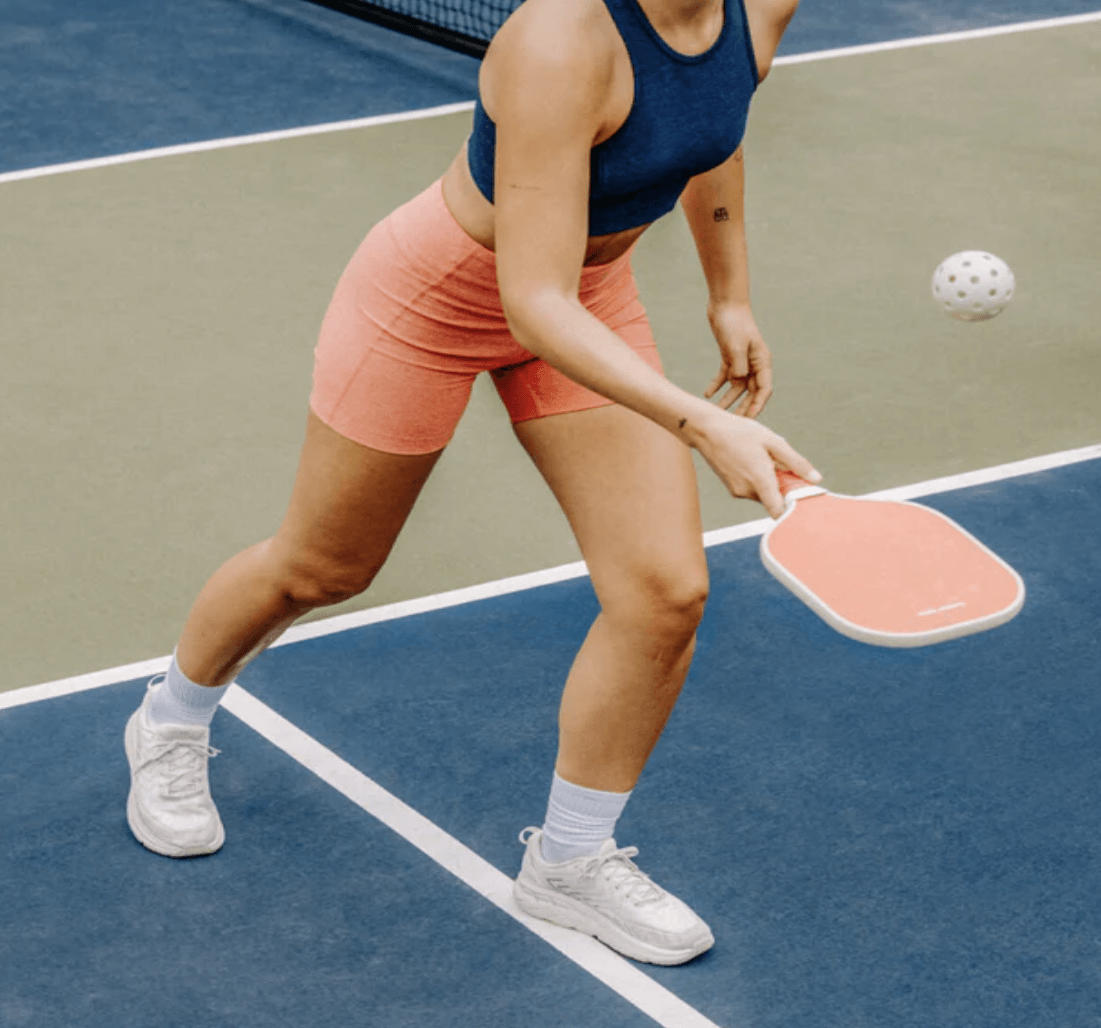
Pickleball
Posted on January 31, 2023 by Great Florida Homesby Mindi Rudan
Unless you live under a pretty big rock, you’ve at least heard of pickleball OR already ARE one of the purported 4.8 million “picklers,” (according to a 2022 report from the Sports & Fitness Industry Association) actively playing the game in the US alone.
Growing a whopping average of 11.5 percent a year since 2017 (39.3% in last two years), when it apparently became all the rage, people who play are literally obsessed with it.
And by people —we mean everyone from Ellen DeGeneres, Leonardo DiCaprio, George and Amal Clooney, the Kardashians, Mathew Perry, MLB player Chase Utley, Jamie Foxx and Will Smith to name drop but a scant few celebrities who revealed their obsession with the game that’s a hybrid between tennis and ping-pong!
In Naples, Florida seems almost everyone is a “pickler,” or knows someone who is. There’s even a center with 60 courts that proclaimed itself the “Pickleball capital of the world.” Serious stuff for a game no one took seriously until pretty recently.
And if you’re wondering WHERE it came from, it sprang like a lot of good ideas, out of parental desperation. Back in 1965, on Bainbridge Island, Washington, THREE DADS were loosing it listening to their kids all constantly bellyache about being bored. So the dads created this “mashup,” of Ping-Pong, tennis and badminton to assuage AND ENGAGE their offspring and stop the complaining. And lol and behold, it worked. That’s the part we know. The part even they weren’t so sure of is exactly how the game came to be known as “Pickleball.”
It’s been a whittled down to two pretty good theories though. The first? Well, because it literally was a hybrid of other “racket” sports, the wife of one of the dads coined the term in reference to the second “string,” leftovers manning the “pickle boat,” in the sport of rowing. She “allegedly” called the new game occupying her kids: pickle ball.
The second (and my favorite if anyone cares,) is that Pickles was the name of the ball chasing family dog of one of the creators and they named the new game in her honor.
In any event, the name stuck. And if you haven’t experienced the game yet yourself, here’s a bit of a primer. It’s just fun. It’s not nearly as proper as tennis, and apparently much easier to pick up, takes not a whole lot of true “athleticism,” and has a kooky lingo all its own. Kinda like Starbucks speak only less caffeine.
And rather than the players audibly grunting with every move, you hear the unique “plunking” of oversized WHIFFLE BALL sailing thru the air after bouncing off the composite paddles.
Huh??

Walk on by the estimated near 10,000 pickleball enabled parks, community centers, sport complexes and now fitness centers in the US, and just listen. Those whiffle balls (which by the way come in indoor and outdoor use AND in an array of fun colors — the most popular being NEON green)-and make their own kinda funny sound. And then the other sound you hear …is people laughing which can partially explain how loved this game has become.
“It’s just fun,” says Joy Carter, CS Commissioner and Realtor with Keller Williams, Great Florida Homes. Carter who’s been playing the game since 2015. She snd her friend Mayra learned from then 81 year young Mary Alice Lafferty who says Carter, “pushed us to try this game and learn it. Then RELUCTANTLY I bought a paddle at her insistence! It was so much FUN! The courts were shorter, the ball (wiffle) easier to manage. I was Hooked! I went from playing just once a week to ultimately 3-5 times a week.
And that’s another boon for this game and quite possibly why there are so many places to play springing up everywhere. Pickleball requires 25% of the space (court) that tennis does. A mere 20 x 44 foot space is all that’s needed.
Says Carter, “Bernie Moyle who owns Country Club of Coral Springs has always been a ardent supporter of ANYTHING that makes Coral Springs a huge success. And to that end has built 8 Pickleball courts (in the remodel of the Country Club) on the cusp of this mega mania. Between his genius and the vision of Coral Springs Parks and Recreation Director, Rob Hunter with the support of his City Commission, Pickleball is firmly routed in Coral Springs with 20 courts.” And other cities have expanded their facilities as well.
Impressive for a sport that’s really still in infancy,
Another reason people who play love it and make the time to play often is meeting other fun people. “I’ve met so many new people,” said Carter. “And rekindled relationships with others I knew but now know better.
Because Pickleball doesn’t require the players to be Serena Williams or Roger Federer, ANYONE who can hold a paddle and has a modicum of spatial ability can play. Young and not so young can get good enough to play competitively in a pretty short amount of time. Says Giuliano Rancic, former E news reporter, “and since you can play at any age, it’s a great FAMILY sport.”
A lot of the laughter comes from having to remember a bunch of “funny” rules and trying to remember the score. Essentially Pickleball can be played in or outdoors and with two players (singles), or four players (doubles). You hit a perforated hollow polymer ball (whiffle) over a 36-inch-high net using solid-faced paddles. Opponents on either side of the net hit the ball back and forth until one side commits a rule infraction. (See Basic Pickleball Rules)
Pickleball gets people out, engaged, involved in their community, affords the opportunity to meet new people, make new friends, have tons of laughs, and get some exercise without the pressure of being in storybook physical shape or have any true athletic ability. A query on FB or local apps turn up where to play and even people to play with. So if you can hold a fork and get a forkful of food into your mouth, you can probably hold a Pickleball racquet and play the game. Bonus points if you like to laugh.
The link below is to some cool videos that better explain the game. There is also a USA Pickleball organization with a pretty informative website at: https://usapickleball.org and the pretty cool videos on Vimeo can be found here: https://vimeo.com/568461574
And locally, the Coral Springs Community Chest which supports so many local charities will be hosting another fundraising tournament on April 21st this year.
Email: coralspringscommunitychest@gmail.com.
https://coralspringscommunitychest.org.
So if you find yourself in a pickle (I just had to!) looking for something new to do… try it out.
Mindi Rudan is the former founder and publisher of Parkland/CS LIFE, BocaDelray Life and Coconut Creek Life magazines, a writer, sometime event planner, full time pet mom and now wreath-maker. Follow her on Facebook at: https://www.facebook.com/mindi.rudan?mibextid=LQQJ4d

- Pickleball is played either as doubles (two players per team) or singles; doubles is most common
- The same size playing area and rules are used for both singles and doubles
The Serve
- The server’s arm must be moving in an upward arc when the ball is struck.
- Paddle contact with the ball must not be made above the waist level.
- The head of the paddle must not be above the highest part of the wrist at contact.
- A ‘drop serve’ is also permitted in which case none of the elements above apply.
- At the time the ball is struck, the server’s feet may not touch the court or outside the imaginary extension of the sideline or centerline and at least one foot must be behind the baseline on the playing surface or the ground behind the baseline.
- The serve is made diagonally crosscourt and must land within the confines of the opposite diagonal court.
- Only one serve attempt is allowed per server.
Serving Sequence
- Both players on the serving doubles team have the opportunity to serve and score points until they commit a fault *(except for the first service sequence of each new game).
- The first serve of each side-out is made from the right/even court.
- If a point is scored, the server switches sides and the server initiates the next serve from the left/odd court.
- As subsequent points are scored, the server continues switching back and forth until a fault is committed and the first server loses the serve.
- When the first server loses the serve the partner then serves from their correct side of the court (except for the first service sequence of the game*).
- The second server continues serving until his team commits a fault and loses the serve to the opposing team.
- Once the service goes to the opposition (at side out), the first serve is from the right/even court and both players on that team have the opportunity to serve and score points until their team commits two faults.
- In singles the server serves from the right/even court when his or her score is even and from the left/odd when the score is odd.
*At the beginning of each new game only one partner on the serving team has the opportunity to serve
before faulting, after which the service passes to the receiving team.
Scoring
- Points are scored only by the serving team.
- Games are normally played to 11 points, win by 2.
- Tournament games may be to 15 or 21, win by 2.
- When the serving team’s score is even (0, 2, 4, 6, 8, 10) the player who was the first server in the game for that team will be in the right/even court when serving or receiving; when odd (1, 3, 5, 7, 9) that player will be in the left/odd court when serving
or receiving.
Two-Bounce Rule
- When the ball is served, the receiving team must let it bounce before returning, and then the serving team must let it bounce before returning, thus two bounces.
- After the ball has bounced once in each team’s court, both teams may either volley the ball (hit the ball before it bounces) or play it off a bounce (ground stroke).
- The two-bounce rule eliminates the serve and volley advantage and extends rallies.
Non-Volley Zone
- The non-volley zone is the court area within 7 feet on both sides of the net.
- Volleying is prohibited within the non-volley zone. This rule prevents players from executing smashes from a position within the zone.
- It is a fault if, when volleying a ball, the player steps on the non-volley zone, including the line and/or when the player’s momentum causes them or anything they are wearing or carrying to touch the non-volley zone including the associated lines.
- It is a fault if, after volleying, a player is carried by momentum into or touches the non-volley zone, even if the volleyed ball is declared dead before this happens.
- A player may legally be in the non-volley zone any time other than when volleying a ball.
- The non-volley zone is commonly referred to as “the kitchen.”
Line Calls
- A ball contacting any part of any line, except the non-volley zone line on a serve, is considered “in.”
- A serve contacting the non-volley zone line is short and a fault.
Faults
- A fault is any action that stops play because of a rule violation.
- A fault by the receiving team results in a point for the serving team.
- A fault by the serving team results in the server’s loss of serve or side out.
Determining Serving Team
Any fair method can be used to determine which player or team has first choice of side, service, or receive. (The “eeny meeny” method works too!)



